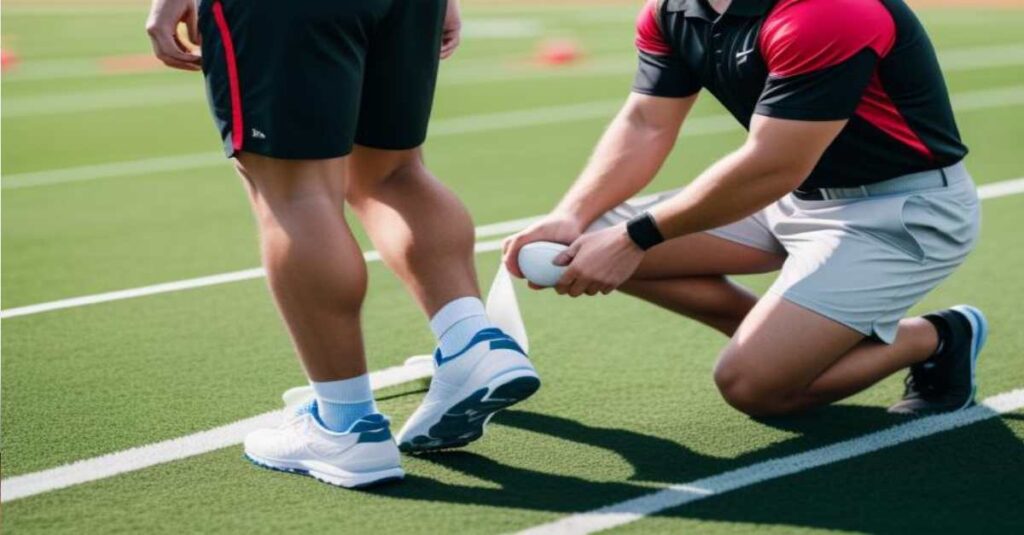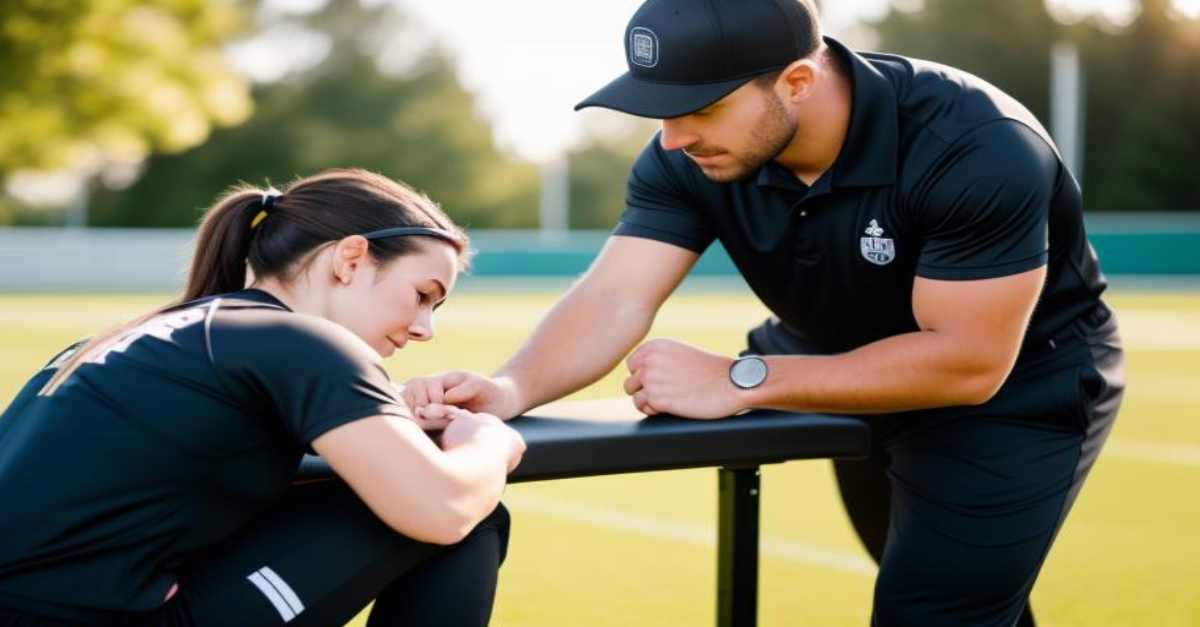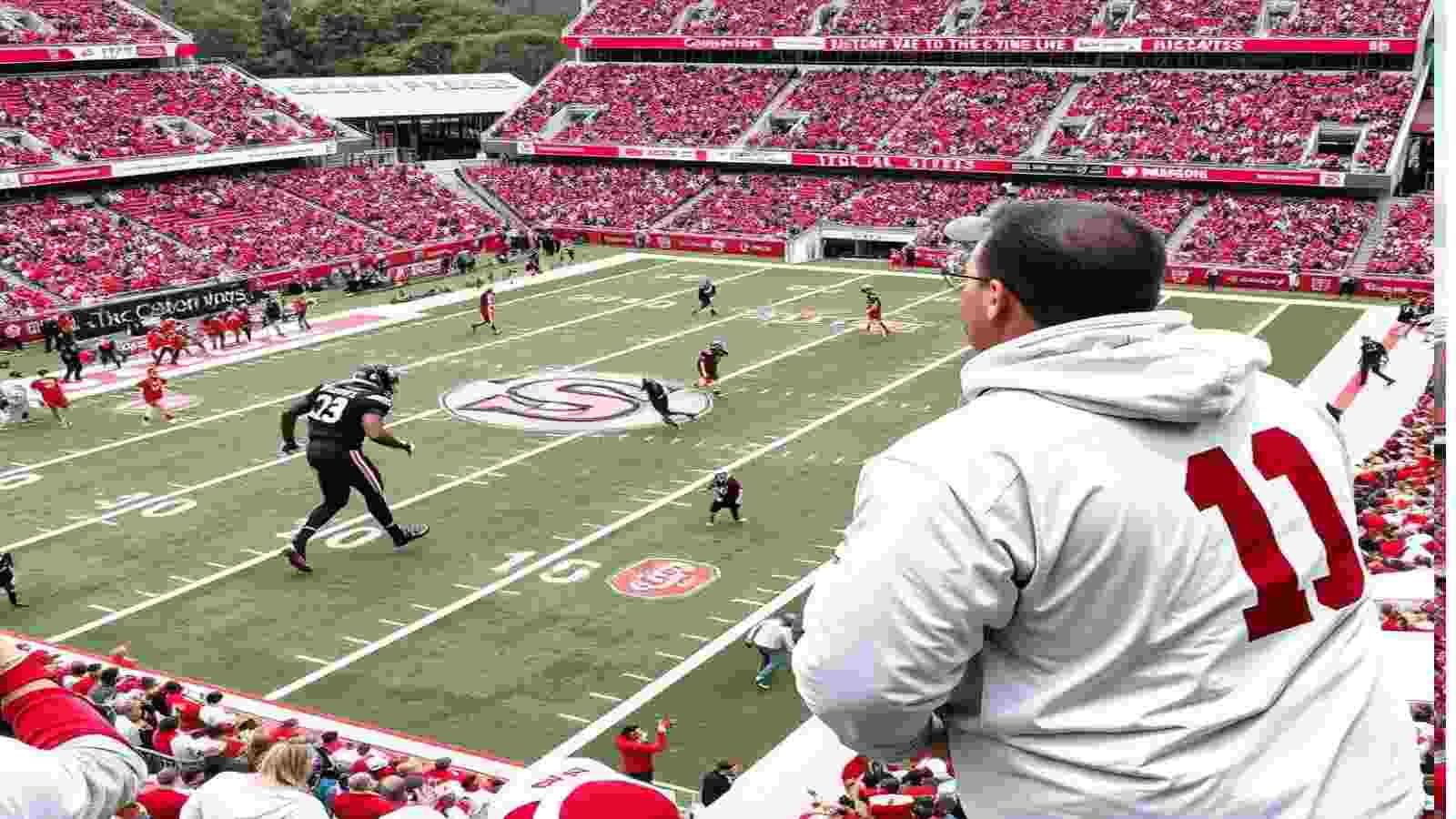Becoming an athletic trainer is a rewarding career path involving education, certification, and practical experience. Here’s a breakdown of the time commitment required:
Educational Requirements

- Bachelor’s Degree:
- Duration: 4 years
- Details: You must complete a bachelor’s degree program accredited by the Commission on Accreditation of Athletic Training Education (CAATE). This coursework typically includes anatomy, physiology, nutrition, biomechanics, and exercise physiology.
- Master’s Degree (Optional):
- Duration: 2 additional years (if pursued)
- Details: Some athletic trainers pursue a master’s degree in athletic training or a related field for advanced knowledge and career growth.
Certification Process
- Completion of CAATE-Accredited Program:
- Details: Fulfill all program requirements, including clinical experience and coursework in anatomy, physiology, nutrition, and biomechanics.
- Board of Certification (BOC) Exam:
- Timing: After graduation
- Details: Candidates can sit for the BOC exam, which covers injury prevention, clinical evaluation, and rehabilitation. Passing this exam is crucial to becoming a certified athletic trainer.
- State Licensure:
- Details: Many states require licensure, which may involve additional examinations or requirements beyond the BOC exam.
Practical Experience

- Clinical Practice:
- Duration: Approximately two years of part-time work (minimum of 800 hours)
- Details: Gained through supervised clinical rotations in various settings like high schools, colleges, and healthcare facilities. This hands-on training covers injury prevention, assessment, and rehabilitation.
Continuing Education
- CEUs for Certification Maintenance:
- Duration: Ongoing throughout your career
- Requirements: Typically, 50 Continuing Education Units (CEUs) over two years, with at least 10 in Evidence-Based Practice (EBP) Category C. This includes professional development activities to enhance knowledge and skills.
Total Time Commitment
Here’s a rough estimate of the total time investment:
- Bachelor’s Degree: 4 years
- Optional Master’s Degree: +2 years
- Clinical Experience: Integrated during bachelor’s (approx. two years of part-time work)
- Certification and Licensure: Concurrent with education completion
Total Minimum Duration: Approximately 4-6 years, depending on whether a master’s degree is pursued and the speed at which certification and licensure are obtained.
FAQs
What are the typical job settings for athletic trainers?
Athletic trainers work in various settings, including schools, universities, professional sports teams, clinics, and hospitals. Their expertise is essential in managing injuries and facilitating rehabilitation in these environments.

Do athletic trainers work only with athletes?
While athletic trainers primarily focus on athletes, they also provide services to active individuals, including dancers, military personnel, and others who engage in physical activity. Their skills in injury prevention and rehabilitation are applicable across various populations.
What skills are essential for an athletic trainer?
Essential skills include strong communication, problem-solving, critical thinking, and working in a fast-paced environment. Additionally, proficiency in anatomy, injury evaluation, and rehabilitation techniques are essential for success in this field.
Is certification necessary to work as an athletic trainer?
Yes, certification through the Board of Certification (BOC) is required to practice as an athletic trainer legally in most states. Certification signifies that an individual has met the necessary education and examination standards.
How can I maintain my certification as an athletic trainer?
Certified athletic trainers must complete 50 Continuing Education Units (CEUs) every two years, which includes activities focused on improving professional skills and knowledge. Some states may have additional requirements for licensure renewal.
Conclusion
The path to becoming an athletic trainer is rigorous but rewarding. It involves a blend of formal education, hands-on experience, and continuous professional development. If you’re passionate about sports, health, and fitness and are ready to invest the time to gain the necessary skills and credentials, this career can be incredibly fulfilling and impactful.










